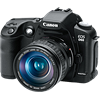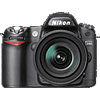Main
Model
Price
Advantages
launch
Announced
Body type
Camera subcategory
Sensor
Effective pixels
Max resolution
Sensor size
Sensor type
Image ratio w:h
Other resolutions
Sensor photo detectors
Image
ISO
White balance presets
Custom white balance
Image stabilization
Uncompressed format
JPEG quality levels
Boosted ISO (maximum)
Photography features
Minimum shutter speed
Maximum shutter speed
Aperture priority
Shutter priority
Built-in flash
Flash range
External flash
Flash modes
Continuous drive
Self-timer
Exposure compensation
Screen / viewfinder
Screen size
Touch screen
Live view
Viewfinder type
Viewfinder coverage
Viewfinder magnification
Articulated LCD
Screen dots
Videography features
Microphone
Optics & Focus
Autofocus
Digital zoom
Manual focus
Number of focus points
Lens mount
Focal length multiplier
Physical
Weight (inc. batteries)
Dimensions
Environmentally sealed
Battery
Battery details
Storage
Storage types
Storage included
Connectivity
USB
HDMI
Remote control
Other features
Orientation sensor
Timelapse recording
Samples
Videos
Summary
The D80 has bigger sensor compared to the EOS D60: APS-C (23.6 x 15.8 mm) versus APS-C (22.7 x 15.1 mm). It is the most important advantage of this model as large sensor lets the camera owner to make pictures of the higher quality. The D80 offers a wider ISO range of 100-1600 than 100-1000 ISO range of the EOS D60. Such ISO range allow the camera owner to make good quality pictures in dim light conditions. The D80 has more number of white balance presets - 6. This specification gives the camera owner more control over colour.
The Nikon D80 weighs 668g that is 187g less in comparison with the weight of the Canon EOS D60.
Considering the above differences the Nikon D80 will become the best choice. Get the list of the best offers on Amazon.


